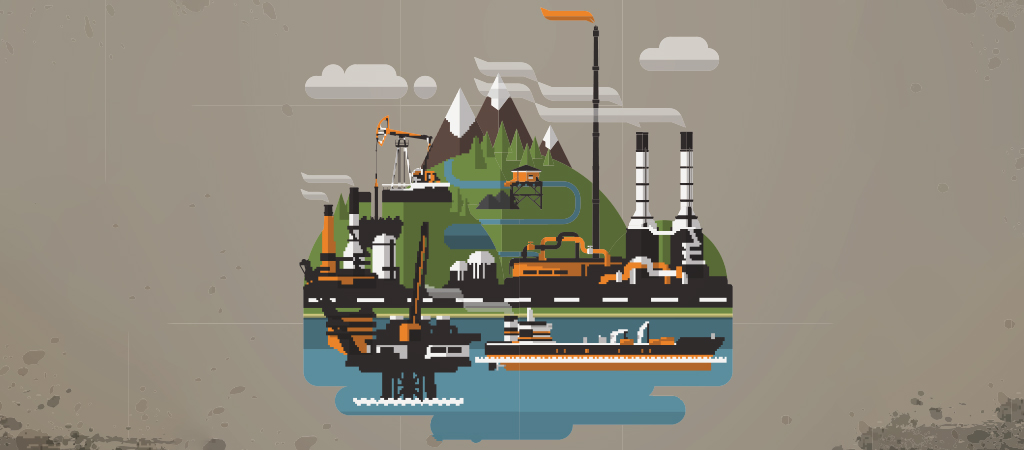Transportation
Domestic and International Airlines
The domestic Airlines industry is expected to grow at an annualised 2.0% over the 5 years through 2020.
The challenge for Virgin is increasing productivity and service standards while reducing costs and maintaining safety.
Qantas faces the greatest challenges. Over the last decade, new low cost operators have attracted more passengers to Australian skies and cannibalised Qantas’ customer base. Domestic rival Virgin Australia, with lower staff costs and greater productivity, is also moving into the premium domestic market where Qantas had exploited a monopoly over the past 10 years. Virgin has strong foreign airline backers with deep pockets, whereas Qantas is struggling to attract investor interest, and foreign ownership is capped by law.
Internationally, Qantas also has challenges including the inefficiency that runs throughout the organisation and high labour costs (the average wage cost at Qantas is double that for many competitors who also have higher productivity). It is now seen that buying the A380 was a mistake because the super jumbo is simply too big when travellers are demanding point-to-point services and high frequency. Not buying the 777 has blocked use of one of the most versatile, fuel efficient and reliable aircraft currently operating.
The challenge for Qantas is the huge lead their competitors have. The biggest task they face is a fundamental culture change when, as Rod Eddington observed, “Changing airline culture is like trying to perform an engine change inflight.” No matter what the government does with the Qantas Sale Act, or even if it steps in with a bank guarantee or a buy-in, Qantas is doomed if it does not aggressively address its cost base.
A Business Emulation is an ideal system for driving high velocity culture change. It has the capability to help staff see death right between the eyes so the impetus to change becomes strong enough; and it also produces the means to change. The output of a Business Emulation is the buy-in to change and the method to succeed.
State and Publicly Owned Rail – Freight
Rail is dominated by transport of bulk freight over long distances. It plays a significant role in transporting coal, iron ore, grains, rice, cotton and sugar for processing and exports. The industry has grown strongly driven by demand from Mining. Australia faces significant challenges in meeting its infrastructure needs with freight forecast to double over the next 20 years and treble along the eastern seaboard. Industry concentration is expected to increase in the next 5 years.
The Rail Freight industry is changing from a government owned collective of state based rail systems that were built to service another age to a mix of private and state owned more commercially orientated industry. The industry has a high fixed cost base and needs to increase productivity; and regulatory fragmentation across states remains a barrier to more efficient operations and a genuinely national industry. Rail is still plagued by inefficiency, creating transport costs to end users that are around 20% higher than global benchmarks.
Business Emulation technologies have been employed by a number of rail operators in the USA to reduce costs, deploy predictive maintenance systems, reduce maintenance costs and improve MTBF.
State Owned Rail – Passenger
Most of Australia’s population growth is occurring in capital cities within which these major players operate passenger bus networks, leading to growth in market share concentration over the past 5 years. There has been a resurgence in the popularity of passenger rail over the past decade, with patronage in many cities reaching record levels. Industry revenue is forecast to grow at a compound annual rate of 3.1% per year over the 5 years through 2020.
The emergence of low cost competitors (like driverless cars) means that the industry needs now, more than ever, to invest in new technologies, new capabilities and improved productivity, and deliver lower prices to consumers.
Business Emulation technologies have been employed by a number of rail operators in the USA to accelerate innovation and change, reduce costs, deploy predictive maintenance systems, reduce maintenance costs and improve MTBF.
State Owned Bus / Tram
Australia has run down their public transport in the last 50 years and is now trying to reverse this trend. One key influence on change in the urban passenger transport sector is an increasing number of low-density corridors more suitable for bus systems than rail. Increasing urban congestion and expanding networks have driven growth in the Urban Bus and Tramway Transport industry over the past 5 years.
A continuing challenge is to protect existing market share and grow new market share in competition with the car (characterised by its immediate availability, predictability, flexibility and seamless delivery door to door – in contrast, bus and train are characterised by relative inflexibility, unpredictability, and disconnectedness.) Despite this, industry revenue is forecast to rise steadily over the 5 years through 2050 at a compound annual rate of 4%.
The emergence of low cost competitors (like Uber and driverless cars) means that the industry needs now, more than ever, to invest in new technologies, new capabilities and improved productivity, and deliver lower prices to consumers.
Business Emulation technologies have been employed by a number of bus operators to accelerate innovation and change, reduce costs, deploy predictive maintenance systems, reduce maintenance costs and improve MTBF.








